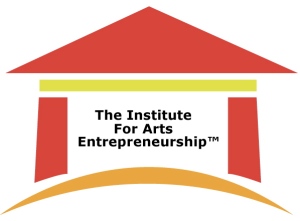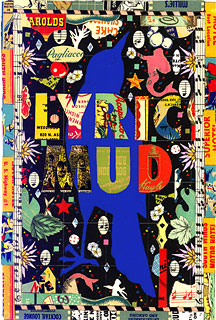What does it mean to you to be authentic? Do you have days where you feel really connected to who you are and others where it feels like you cannot find the “switch” to flip on your authenticity? I know I certainly do!
Being authentic is what brings to center stage the Real You and Me, our true Self. By definition when we are authentic we are tapping into “those qualities that establish truth and correctness; Genuineness; originality, sincerity, and not a copy or forgery.” And it is our true self that is required to be fully present if we ever hope to begin to discover the entrepreneur within each of us. This is why our state of mind so quickly must become an integral part of evaluating our entrepreneurial readiness.
I know that it is only when I am in touch with the real me that I actually am able to truly be my creative best and expand my thinking and views of what my world can hold. In those moments where I am afraid, upset or withdrawn I have distanced myself from my authentic self and have lost sight of what it is that is really amazing about me. It is only when I am in touch with my uniqueness, and am myself experiencing it, that the highest level of ideas flow through my mind that begin to shape my entrepreneurial vision.
Do you know what those moments or hours of your authenticity looks like?
For me I know I am being authentic when I feel calm, clear headed, speak with authority and ease, feel playful yet curious all at the same time. When I am authentic my feelings and behaviors are consistent with one another and I feel the most content and at peace with life. This is when I usually am able to say ” Thank God I am alive” and “What a wonderful day today is” as well as ” I have a great idea!”
So, how do we reach this level of fulfilment and possibility? According to Abraham Maslow, an American psychologist whose theories have been influential in 20th century thought, we reach fulfilment, or the expression of our full potential, through reaching a state of self-actualization.
According to Abraham Maslow, we have a hierarchy of needs that must be fulfilled in the following order to be able to reach our own self-actualization, which we must reach to achieve to successfully begin an entrepreneurial venture.
These needs beginning with (I) basic needs for food, shelter, then (II) needs for safety and security, (III) needs for love and belonging, (IV) the need for self esteem, and (V) the need for self-actualisation. We cannot meet the higher-order needs until the lower ones are met.

How do we characterise Self-Actualised (SA) people?
SA people are realistically oriented with an efficient perception of reality extending into all areas of their life.
SA persons are unthreatened and unfrightened by the unknown. They usually have a superior ability to reason, to see the truth.
SA people accept themselves, others the way the are. They have rid themselves of crippling guilt or shame and enjoy themselves without regret or apology, and have no unnecessary inhibitions.
SA people are spontaneous in their inner life, thoughts and impulses and are motivated towards continual improvement.
SA individuals focus on problems outside themselves. SA people tend to have a mission in life requiring much energy, and their mission is their reason for existence. They are usually serene and worry-free as they pursue their mission with unshakeable determination.
SA individuals have a need for detachment, the need for privacy. Alone but not lonely. SA people are self starters, responsible for themselves, own their behaviour.
SA’s rely on inner self for satisfaction. Resilient and stable in the face of hard knocks, they are self contained, independent from love and respect of others.
SA’s have a fresh rather than stereotyped appreciation of people and things, living the present moment to the fullest. SA’s experience what Maslow described as peak experiences. “Feelings of limitless horizons opening up to the vision, the feeling of being simultaneously more powerful and also more helpless than one ever was before, the feeling of ecstasy and wonder and awe, the loss of placement in time and space with, finally, the conviction that something extremely important and valuable had happened, so that the subject was to some extent transformed and strengthened even in his daily life by such experiences.” Abraham Maslow.
Here are Eight Ways to Work Towards Self Actualization:
#1 Work towards meeting and satisfying the lower-order needs (food, shelter, then safety and security, then love and belonging, and then self esteem). Once you have done this, and I acknowledge that it may be difficult and time-consuming, you will be able to make progress with the following:
#2. Life is a moment-by-moment choice between safety (out of fear and need for defence) and risk (for the sake of progress and growth): Consciously make the growth choice many times a day.
#3. Let your true self emerge. Try to go beyond socially-defined modes of thinking and feeling, let your inner experience tell you what you truly feel.
#4. When in doubt, be honest. It may take some courage, but look honestly at yourself and take responsibility for who you are and what happens to you. Self-delusion or self avoidance is the enemy of self-actualisation.
#5. Listen to your own tastes. Be prepared to be unpopular if necessary.
#6. Use your intelligence, work to do well the things you want to do, no matter how insignificant they seem.
Make peak experiencing more likely: learn what you are good at and conversely what you are not good at.
#7. Know who you are, what you are and what is good and bad for you. Where you are going, what is your mission? Opening yourself up to yourself in this way means letting go of your judgement and accepting who you are as you are. Self love is true mastery of self!
#8 Step up to the opportunities that present themselves by embracing your courage to evolve and grow.
I hope this post has helped you better understand what needs must be met in your life to develop the level of emotional intelligence you need to thrive. Life can be an amazing adventure or a nightmare depending on how committed you are to reaching your own level of self-actualization. Adding Entrepreneurship into your self-actualized life will transform your 2D adventure into 3D! I could not live my life without this level of dimension.
I hope you come to feel the same way too.












 There is nothing more enjoyable than on a windy beautiful clear day flying a kite high up in the sky. I have a feeling Barbara Kite would agree.
There is nothing more enjoyable than on a windy beautiful clear day flying a kite high up in the sky. I have a feeling Barbara Kite would agree. 
 A friend offered to download movies free from the internet for our viewing pleasure, and at first I thought that was dandy, but then I thought of all the creatives who wouldn’t be paid a royalty, so I opted instead to rent.
A friend offered to download movies free from the internet for our viewing pleasure, and at first I thought that was dandy, but then I thought of all the creatives who wouldn’t be paid a royalty, so I opted instead to rent. Linda Naiman is founder of CreativityatWork.com, co-author of Orchestrating Collaboration at Work, and an associate business coach at the University of British Columbia. She is recognized internationally for pioneering arts-based learning for business, using of art as a catalyst for developing creativity, innovation, and collaborative leadership in organizations. She has been featured in The Vancouver Sun, The Globe and Mail, Profitguide.com, and Canadian Business Magazine. Clients include Fortune 500 companies, public sector organizations and boutique consultancies in North America, Europe and Asia.
Linda Naiman is founder of CreativityatWork.com, co-author of Orchestrating Collaboration at Work, and an associate business coach at the University of British Columbia. She is recognized internationally for pioneering arts-based learning for business, using of art as a catalyst for developing creativity, innovation, and collaborative leadership in organizations. She has been featured in The Vancouver Sun, The Globe and Mail, Profitguide.com, and Canadian Business Magazine. Clients include Fortune 500 companies, public sector organizations and boutique consultancies in North America, Europe and Asia.








